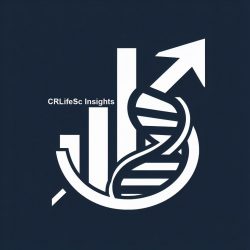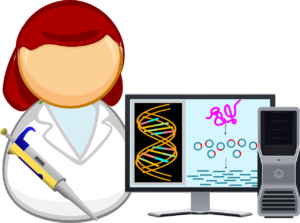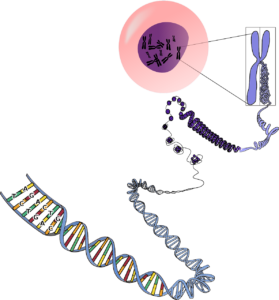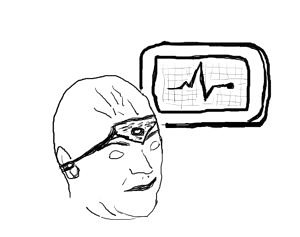Antidepressants are often used for migraine prophylaxis, but their use is limited to off-license. A high percentage of patients not fully satisfied with their current treatments could justify more research to develop licensed antidepressants to deal with this medical condition.
Main use of antidepressants
The purpose of prescribing antidepressants is to help relieve symptoms of depression, anxiety disorders and other medical conditions that include migraine prophylaxis, at least used off-label. It is important to note that these medicines do not cure the disease but just treat symptoms.

The mechanism of action of these drugs is mainly based on targeting imbalances of neurotransmitters in the brain that could be part or a consequence of the origin of these medical conditions.
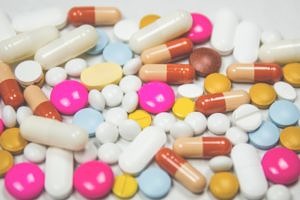
Migraine and depression may share modulatory factors
Chronic stress and depression are frequent in migraineurs and thus seem to share, at least in part, modulatory factors. Just in the United States 8% – 12% of people aged over 12 years old are using antidepressants, with females representing approximately three quarters of patients. It is estimated that around 22% of migraineurs may be suffering from depression, and it seems common that patients are diagnosed with depression or anxiety just after being diagnosed with migraine – this may be influenced by the fact that antidepressants are not always covered by health insurance to treat migraine as a first-line therapy, particularly in the United States.
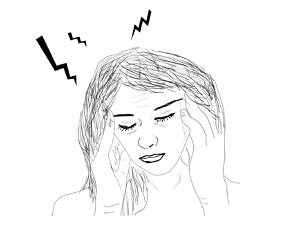
According to many studies, it seems obvious that serotonin plays a relevant role in migraine and depression.
Serotonin, released from brainstem serotonergic nuclei, is thought to be mediated by its direct action upon the cranial vasculature. Vessel vasodilation seems one of the main causes that result in migraine headaches. Other scientists have suggested that serotonin could intervene in central pain control pathways or could be the consequence of cerebral cortical projections of brainstem serotonergic nuclei. Low levels of serotonin could make easier the activation of the trigeminovascular nociceptive pathways in conjunction with cortical spreading depression.
In any case, serotonin receptors (5-HT receptors) have been one of the main targets in the development of antimigraine drugs. There are at least 7 classes and 14 subtypes of 5-HT receptors, all with varied biological effects. 5-HT1B serotonin agonists in blood vessels known as triptans are the most relevant antimigraine abortive drugs now. Still, triptans are also agonists at the 5-HT1D receptor, which contributes to their antimigraine effect caused by vasoconstriction of blood vessels in the brain.
On the other hand, scientists believe that an imbalance in serotonin levels, particularly diminished activity of serotonin pathways, may influence mood in a way that leads to depression. It is important to notice that this theory has not been fully substantiated though. Some authors suggest that an imbalance in serotonin levels may not be the only cause to suffer from depression and that other factors may also influence, or even be the main cause on their own for certain patients.
SAMe (S-adenosyl-l-methionine), an amino acid-based substance produced naturally throughout the human body, has been postulated as a potent antidepressant that could also be useful to treat migraines due to its modulating effect on serotonin. SAMe has been available as a dietary supplement in the US since 1999, but it has been used as a prescription drug in Germany since 1989.
Studies and experts’ opinions may lead us to think that serotonin levels and imbalances may affect certain individuals under certain circumstances that may prompt migraine and depression or anxiety disorders at the same time. However, it is clear that serotonin is not the only cause for migraine and depression because not all people suffering from migraine have depression and vice versa.
TCAs and SSRIs are the main antidepressant categories used in migraine prophylaxis
Focusing on the prevention of migraine, tricyclic antidepressants (TCAs) and selective-serotonin re-uptake inhibitors (SSRIs) are the most often used categories of antidepressants because these types of product seem to block serotonin reuptake. However, more selective serotonin reuptake inhibitors are not very effective in migraine prevention. Within the TCA category amitriptyline and nortriptyline dominate this segment whilst duloxetine hydrochloride is the leading SSRI drug for migraine treatment.
From a patients’ profiling point of view, as an example, a study showed that migraine attacks after use of tricyclic antidepressants (TCAs) was reduced in all NOS3 genotypes (nitric oxide synthase 3) patients, though there was no significant effect in intensity of headache. Researchers detected an inhibitory role in migraine generation, predominantly in patients with homozygous genotype, due to the decreased frequency of migraine attacks.
Nonetheless, a major concern in the use of antidepressants is their side effects. The use of amitriptyline conveys major worries about suicidality that may not be worth running the risk of their prescription. Patients also report suicidal thoughts with other antidepressants including SAMe.
Serotonin syndrome may also happen in patients that take triptans, TCAs or SSRIs abusively. Symptoms for serotonin syndrome include high body temperature, agitation, increased reflexes, tremor, sweating, dilated pupils, and diarrhea. Under extreme circumstances it may also include seizures and extensive muscle breakdown.
Anyhow, antidepressants should be avoided in elderly migraineurs and patients with comorbid overweight, epilepsy, or concentration and mental psychic performance.
The antidepressants market in the treatment of migraine
In the United States no antidepressant is officially approved to treat migraine, but just in the US market amitriptyline may be generating more than $10.0 million annually specifically targeting this indication at manufacturers’ level. Both nortriptyline and duloxetine hydrochloride combined may be around another $10.0 million. In Germany and the United Kingdom amitriptyline is estimated to have sales of approximately $1.60 million and $2.99 million respectively per annum for the prevention of migraine alone.
Some products containing amitriptyline are approved for the treatment of migraine in Germany. In the United Kingdom this active ingredient is used unlicensed for migraine prophylaxis according to the British National Formulary (BNF). In the United States it is used off-label.
Amitriptyline oral tablets and combinations with chlordiazepoxide, a sedative drug, or perphenazine, an antipsychotic drug, are off patent.
Nortriptyline oral capsules and solution and duloxetine hydrochloride delayed release pellets capsules have also lost their patent protection.
Medical devices may treat migraine and depression too
The connection between depression and migraine is also perceived strongly in the interest shown by some companies in the development and use of medical devices.
Patent publication number WO9400189 filed in 1992 by Cyberonics describes alleviation of migraine attacks by selectively applying by electrodes a predetermined electrical signal to the patient’s vagus nerve with an implanted neurostimulator device. Cyberonics markets the Vagus Nerve Stimulation (VNS) Therapy System, which was FDA-approved in 1997 and received CE Mark in 1994 for the treatment of refractory epilepsy and treatment-resistant depression. However, this is just an example as there are a large number of patents related to medical devices describing treatment of depression and migraine that have been filed by many companies.
In Europe, electroCore’s nVNS technology has a CE mark for primary headache (migraine and cluster headache), bronchoconstriction, epilepsy, gastric motility disorders, and anxiety and depression with medical prescription. gammaCore-S® is currently under study for the acute treatment of migraine.
The Fisher Wallace Stimulator received FDA clearance in 1991 for the treatment of insomnia, anxiety, depression and pain, and it is occasionally used off-label for the treatment of migraine.
Antidepressants in personalized migraine prevention may be profitable
In a more personalized medicine in the near future there may be opportunities to develop antidepressants to treat specific subtypes of migraines with ameliorated adverse effects. Understanding serotonin pathways better and improving patients’ genetic profiling will help to find better targets.
The development of a more personalized medicine will force existing products to find their market niches. Improving formulations of existing antidepressants that fit better specific genetic or biochemical patients’ profiles may be profitable for companies and advantageous for these patients. Covering these improved formulations with patents in order to trade them may also be interesting for small companies that do not have the economic muscle to market the product. Prices will be necessarily higher, but a number of patients will increase their quality of life. If these improved formulations are similar enough to the original approved active ingredient the approval process may be shortened and thus costs will also be reduced.
For more information about the antimigraine market in the United States, Germany and the United Kingdom please follow this link


